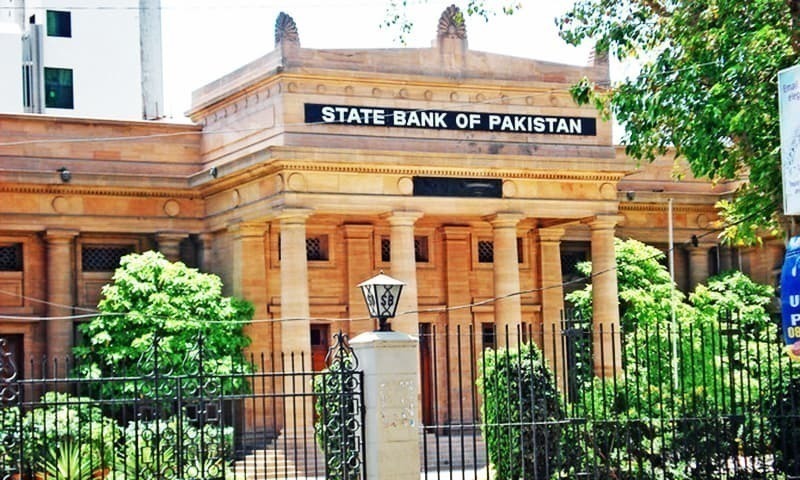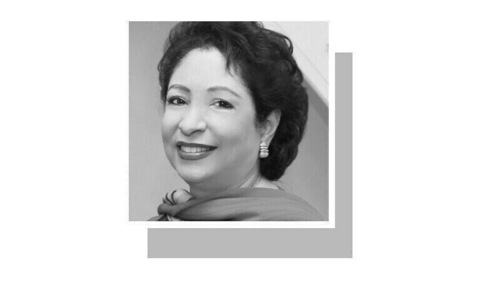The State Bank of Pakistan (SBP) believes it’s time to protect the longevity of economic growth. The central bank also believes it’s time “to keep inflation expectations anchored— and slow the growth in the current account deficit.
The SBP’s recent interest rate hike from seven per cent to 7.25pc — after a long pause of 15 months — is a measured step to achieve these three interdependent objectives.
Pakistan economy grew 3.9pc in 2020-21 ending in June after it slumped to 0.5pc in 2019-20 in the wake of Covid-19 triggered lockdowns and business closures. The target for 2021-22 growth is 4.8pc. But the Asian Development Bank recently said growth could remain lower — just 4pc.
There is an obvious reason why the SBP opted for a quarter percentage point policy rate hike — instead of a greater hike of, say, half a percentage point. The central bank believes this much interest rate hiking would keep inflation expectations anchored to a level where it would not hurt the ongoing economic growth. In other words, it would protect the longevity of growth. And, it also believes that this much monetary tightening would slow the ongoing growth in the current account deficit. The deficit surged to $2.29 billion in July-Aug 2021 from just $838 million in July-Aug 2020 due to a dramatic rise in imports.
The government cannot hold down fuel prices by continuing to take a hit on the petroleum development levy as fiscal room for it is not available and the IMF is reportedly not willing to allow delays in upward adjustments in electricity prices
The central bank’s belief that a mild interest rate tightening of 25 basis points could decelerate growth in the current account deficit is based on the assumption that the slightly tightened interest rate could moderate demand for imports — especially if it is accompanied by tightened rules for imports of consumer items and stricter requirements for seeking consumer finance. (That is why SBP has simultaneously introduced stricter rules for auto and personal loans).
Moderation of domestic demand along with slower growth in imports should weaken domestic demand-induced inflation as well as imported inflation. But since interest rate tightening is mild the consequent weakening of domestic demand, too, would not be too intense as to hurt economic growth. All this seems logical.
But will a 25bps interest rate hike lower inflation in the coming months? Perhaps, yes. Or, perhaps no. A key question is that can such a nominal rise in interest rate keep inflation expectations anchored in an economy like ours?
A large part of our economy is undocumented and as such the phenomenon of too much (undisclosed) money chasing too few goods is hard to identify in real-time. Price and income elasticity to demand — and hence cross elasticity of both price and income elasticity to demand — are not as easy to estimate as in fully documented economies. Unfair business practices including hoarding and overcharging customers are commonplace. Regulatory oversight of markets is very weak. Energy prices that fuel inflation more than anything else have already been on the rise and cannot be expected to come down due to the International Monetary Fund’s (IMF) lending conditions. International food prices are far higher than in the last year affecting domestic food prices.
And, the self-fulfilling prophecy cycle of inflation expectations continues to frustrate inflation-fighting measures — thanks to low financial literacy, lack of ideal coordination between the federation and the provinces, near absence of third-tier governments and over-politicised handling of economic issues.
In July as well as in August this year, 12-month moving national average inflation stood at the same level of 8.8pc. In a 2017 technical research paper, two co-authors — both SBP officials — had established that inflation beyond 6pc starts hurting economic growth in Pakistan. So, isn’t there a need for keeping inflation expectations anchored around this level? Does the SBP expect that a 25bps interest rate hike can do this? Obviously, not. Because in its previous monetary policy statements the SBP talked about 7pc-9pc inflation in the medium term.
A popular rationale for interest rate tightening is that it incentivises savings and leads consumers to spend less in the now — and it increases the cost of inventories for businesses and prompts them to release withheld supplies. The resultant moderation in demand and expansion in supplies make more goods available without further increase in prices.
But quite often the increased cost of capital that follows an increase in interest rate is passed by the producers on to the consumers without immediately drawing down on inventories. Does this happen more frequently at times when interest rates are raised gradually in smaller doses? A detailed technical study by the SBP, desirably in collaboration with economic think-tanks, is required to establish — or reject — this point.
What perhaps does not require a technical study is that a meagre 25bps is too small to incentivise savings in a country like Pakistan where the informal economy is large and where avenues for parking funds in the undocumented sectors are wide-open. (The estimates about the size of the informal economy varies between 35pc and 56pc).
“Looking ahead, the inflation outlook largely depends on the path of domestic demand and administered prices, notably fuel and electricity and global commodity prices,” said the SBP in its monetary policy statement.
But here is a problem. The government cannot hold down fuel prices by continuing to take a hit on the petroleum development levy as fiscal room for it is not available and the IMF is reportedly not willing to allow delays in upward adjustments in electricity prices already promised by Pakistan.
As for global food prices, the Food and Agriculture Organisation’s food price index was up 32.9pc in August 2021 compared to August 2020. Lagged effect of higher prices of food commodities including cereals, sugar, vegetable oils, meat and dairy products — all captured by this index — would likely keep food prices higher in Pakistan for some months— even if the rising trend seen in August weakens in future.
Published in Dawn, The Business and Finance Weekly, October 4th, 2021













































